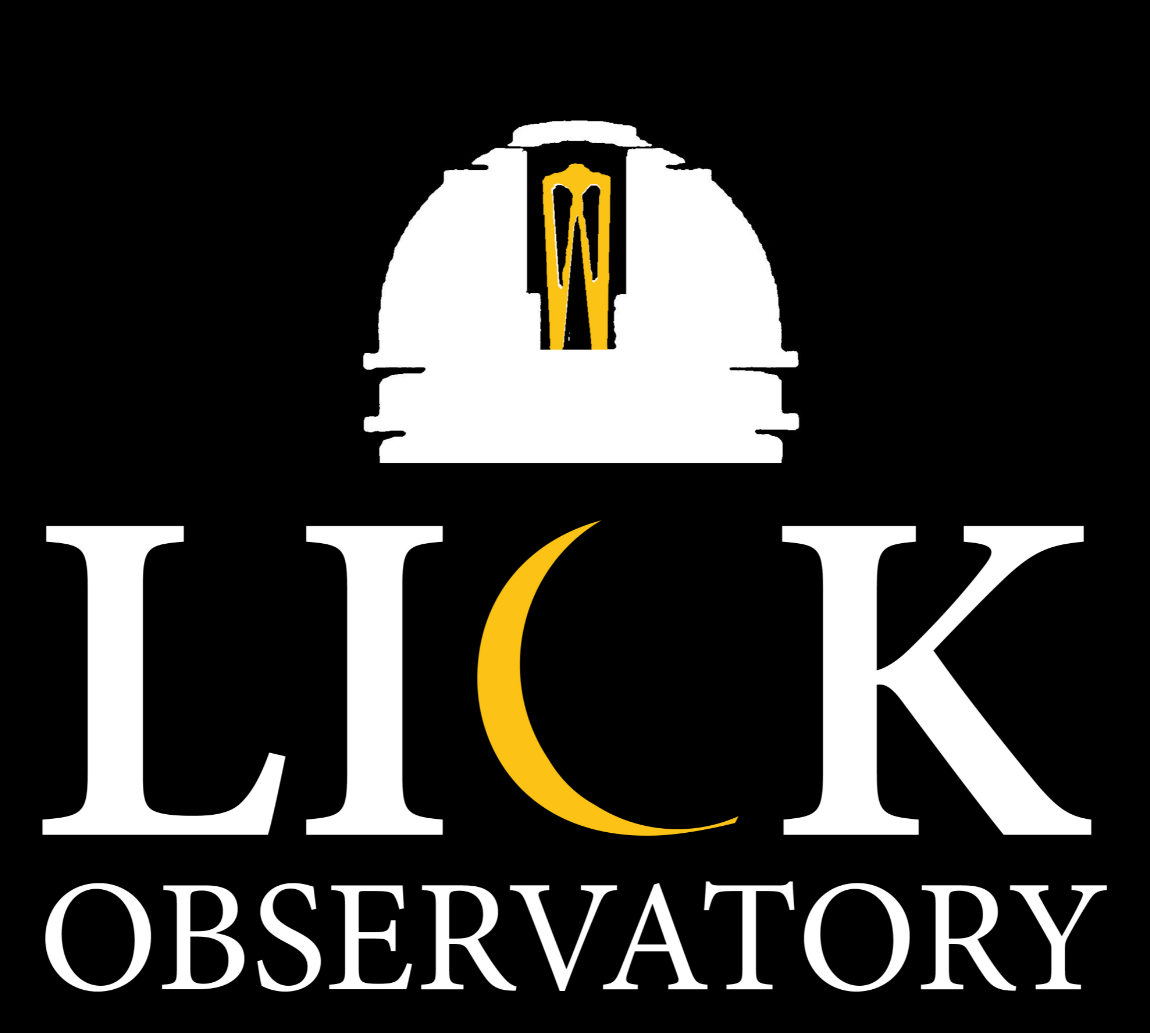Lick Observatory has a rich history of telescope installations on Mount Hamilton. A great many important telescopes are no longer extant at the site, but the following historic telescopes are still available and functional, if no longer used for scientific research.
Crocker Dome

The Crocker telescope, used by Barnard prior to 1900, was originally housed in a “flimsy” dome, ravaged by weather for more than 50 years (as described by Director C. Donald Shane in 1950). The new 16-foot dome was completed in 1950 and remains on-site today, though currently houses no telescope.
The last telescope to inhabit the dome was Vulcan. This telescope was used for testing technology and software for the Kepler Space Telescope.
Boller and Chivens 0.6m (Now Super-LOTIS)
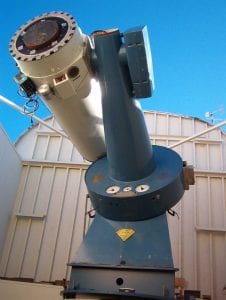
The Boller and Chivens 0.6-m reflector was originally housed in the dome now occupied by the KAIT telescope. The telescope was moved from Mount Hamilton to Steward Observatory on Kitt Peak (Arizona) and renamed Super-LOTIS. It is now robotic searching for optical counterparts of gamma-ray bursts. UC astronomers may apply to use this telescope for imaging programs.
12″ Clark Refractor
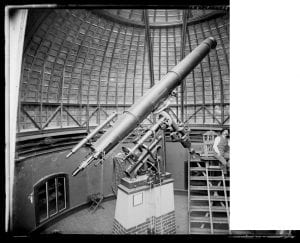
The north dome of the historic Main Building, now home to the Nickel 1-m telescope, is the oldest extant structure at Lick Observatory and originally housed the 12-inch Clark Refractor. Installed in 1881, astronomers observed transits of Mercury and Venus across the face of the sun in the first few years of its use. The objective lens was originally used in Henry Draper’s observatory in NY until 1879. In 1891 Albert Michelson used a new technique called interferometry with this telescope to measure the size of Jupiter’s moons, an accomplishment cited in his 1907 Nobel Prize. In the 1920s and 30s, the 12-inch hosted pioneering developments in the emerging field of electronic light detection. The 12-inch telescope was replaced with the Nickel telescope in 1979, and is now in storage at the UCSC technical shops.
Meridian Circle
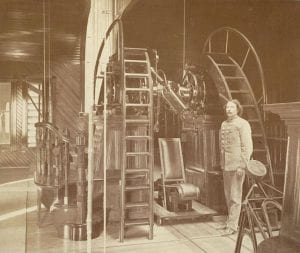
The Meridian Circle was a telescope carefully aligned to measure the time at which an astronomical object crossed the meridian, the point at which the object is highest in the sky, and simultaneously precisely measure its angular distance from the nadir.
This was a special purpose telescope mounted so it points only at the meridian, the great circle through the north celestial pole, zenith, and south point of the horizon. These telescopes rely on the rotation of the sky to bring objects into the field of view.
The pictured instrument was installed in 1884, though a similar instrument, the 4-inch Fauth Transit telescope, was erected in 1881 just northeast of the Main Building.
Mills Observatory
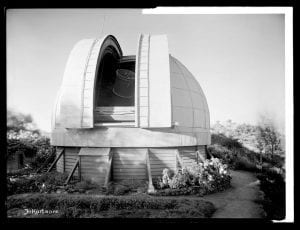
Mill Observatory was the southern station of Lick Observatory, near Santiago, Chile. Funded by D.O. Mills, a prominent California banker, the Mills Astronomical Expedition set out from San Francisco in 1903. The telescope erected at the Chilean observatory site was a 37 inch diameter reflecting telescope equipped with a high precision spectrograph. The optical parts of the telescope and spectrograph were made by John A. Brashear Company, and the mount and dome constructed by the Warner and Swasey Company, the same company that built the mount for the 36″ Lick Refractor.
William H. Wright (Lick Observatory director, 1935-1942) was in charge of the southern station, assisted by H. K. Palmer.

The primary goal of the expedition was to measure the radial velocities, i.e. the speeds towards or away from us, of some 400 stars, to better understand the motion of the Sun in our region of the galaxy. This data would complement the similar data acquired with the 36″ Lick Refractor, which indicated that the Sun was moving towards the southern boundary of the constellation Lyra. Data were taken on photographic plates that were shipped to Lick Observatory on Mount Hamilton for analysis.
In the process of making these measurements, it was discovered that at least one in seven stars has an invisible companion, in addition to any visible companion stars. The high precision spectrograph enabled measurements of the orbital periods of these spectroscopic binary stars.
More Resources
UCO/Lick Observatory programmer, Steve Allen, maintains many pages about the historic telescopes and their positions on Mount Hamilton.
More information about the history of Lick Observatory, including science and document archives.
